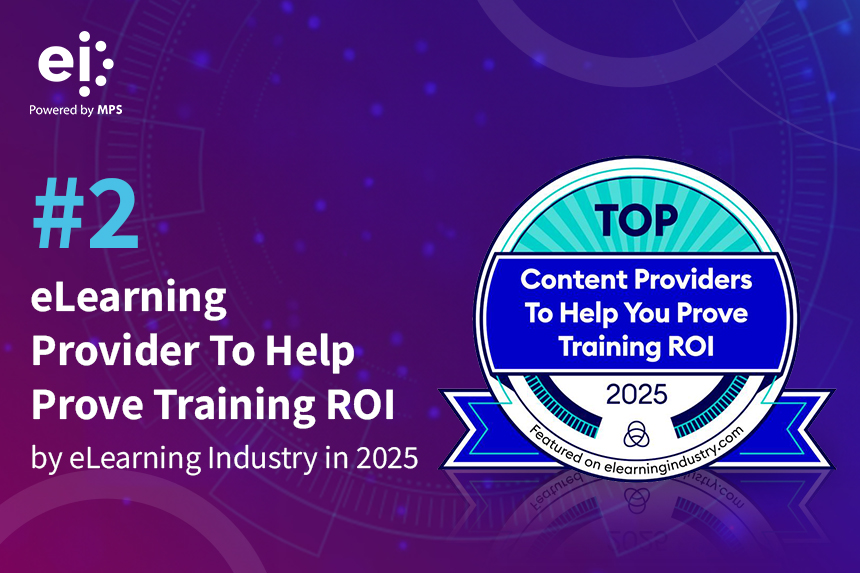
The future of work is unfolding at the intersection of innovation, disruption, and human potential. In this landscape, crafting an effective Learning and Development (L&D) strategy is no longer optional. It has become a critical responsibility for leadership. This article explores key opportunities to build an L&D strategy that empowers organizations to attract, develop, and retain top talent.
Defining the Future of Work
From geographically distributed workforces and new compensation models to culturally diverse teams, gig work, and virtual collaboration—work as we know it is undergoing seismic change. Technology-centered workplaces and new expectations around flexibility are redefining how we operate. As L&D leaders, it’s more important than ever to stay ahead of the curve and understand how these shifts are transforming the way we work, learn, and live. Aligning L&D with evolving business priorities is essential to foster a culture of continuous innovation and measurable impact.
The pace of business, global economic uncertainty, workforce fluctuations, and shifting employee and customer expectations demand that L&D leaders continuously adapt and innovate. Proactively understanding what the future of work means in your context—and using data to inform decisions—is key to staying relevant. Embracing change, experimenting with new approaches, and committing to ongoing development will enable L&D teams to lead transformation and create a resilient, future-ready organization.
Steps to Build a Future-Ready L&D Strategy
A well-structured L&D strategy is critical for adapting to the future of work. Follow these strategic steps to future-proof your L&D efforts:
- Assess Organizational Needs – Identify key business challenges and workforce skill gaps. Use data-driven insights to determine where L&D can add the most value.
- Define Clear Objectives – Align L&D goals with business priorities, ensuring they support long-term growth, employee retention, and innovation.
- Engage Stakeholders – Collaborate with leadership, HR, and employees to ensure buy-in and relevance.
- Leverage Modern Learning Methods – Incorporate blended learning, microlearning, and experiential approaches to cater to diverse learning styles.
- Measure and Iterate – Track progress using KPIs (e.g., skill proficiency, engagement, ROI) and refine the strategy based on feedback.
By following this framework, L&D leaders can create a responsive, future-ready strategy that drives business success.
What Are the 4 Components of Strategic Learning?
Strategic learning frameworks typically include:
- Skills Development – Focus on upskilling and reskilling to meet evolving job demands.
- Performance Support – Provide just-in-time learning resources to enhance on-the-job productivity.
- Cultural Alignment – Embed learning into daily workflows to foster a growth mindset.
- Data-Driven Adaptation – Use analytics to refine programs and ensure continuous relevance.
This structured approach helps organizations stay agile in a rapidly changing work environment.
Aligning L&D with Business Goals
Once a core strategy is in place, the next step is ensuring that it’s tightly aligned with the organization’s broader objectives. This alignment is key to demonstrating value, securing leadership support, and driving measurable performance outcomes.
- Understand the Business Strategy
Start by analyzing the organization’s vision, mission, and strategic goals. Ensure your learning objectives follow the SMART framework—Specific, Measurable, Achievable, Relevant, and Time-bound.
- Collaborate Across Leadership and Functions
Gain buy-in from senior leadership and key stakeholders early. Cross-functional input ensures your L&D strategy supports the right priorities and integrates into wider talent management efforts.
- Conduct Skills Gap and Competency Assessments
Use surveys, interviews, assessments, and SWOT analysis to identify current capabilities and future skill requirements.
- Design an Inclusive and Scalable Approach
Ensure your strategy is inclusive and responsive across geographies, cultures, and learner needs. Integrate DEI principles and make learning accessible to all employee segments.
- Define Performance Metrics
Measure both learning effectiveness and business outcomes—ROI, productivity, engagement, innovation, customer satisfaction, etc. Consider both quantitative and qualitative metrics for a holistic view of impact.
- Benchmark and Optimize
Compare your strategy against industry standards and high-performing organizations. Adjust your roadmap based on performance data, emerging trends, and employee feedback.
By following these steps, L&D professionals can ensure that their activities contribute to the achievement of organizational goals and meet the needs of the current workforce.
An L&D Roadmap for the Modern Workforce
Here’s a roadmap to help L&D leaders prepare for the future of work:
- Create a comprehensive L&D strategy:
A comprehensive L&D strategy must go beyond the basics. The strategy must remain flexible, evolving in step with the organization’s changing goals and direction. It should include a phased approach with clear milestones and metrics that will be evaluated and adjusted as needed. This will ensure that the L&D strategy is effective, relevant, and impactful.
- Understand organizational culture:
L&D Leaders need to be aware of how the organizational culture influences learning preferences, behaviors, and outcomes. To deliver training globally, understanding organizational values and mission is essential. A deeper understanding of what’s needed includes resources, equipment, connectivity, language, and localization requirements. It also means incorporating diversity, equity, and inclusion (DEI) principles into the L&D strategy to foster a culture of respect, belonging, and growth. Organizations (41%) now realize the value DEI plays in employee retention. A culturally responsive L&D strategy built today will enhance engagement, performance, retention, and innovation in the long run.
- Gauge learner awareness and preferences:
Understanding how learners within organizations learn is crucial for the future of work. Make this a priority when aligning L&D with business objectives and create a culture of innovation that drives success in the continuously evolving learning landscape. With different generations joining the workforce, it’s more important than ever to determine how learners approach knowledge retention. Acquiring these metrics allows organizations to explore different learning modalities and cater to individual preferences, maximizing the effectiveness of future training programs.
- Embrace innovative technology:
To stay relevant in the future of work, organizations need innovative technology in their L&D strategy. By understanding learner preferences, organizations can identify and incorporate immersive learning technologies such as Augmented Reality (AR), Virtual Reality (VR), and Mixed Reality (MR). These learning technologies provide real-life scenarios and simulations, enhancing retention, comprehension, and on-the-job performance.
- Examine cost projections and benchmarking:
Developing an effective L&D strategy for the modern workforce requires careful consideration of costs. By examining the potential expenses associated with resources, technology, design, and deployment, learning experts can make informed decisions that drive value for their organizations and learners. Benchmarking against industry standards allows comparisons and rankings of various learning metrics, resulting in a more accurate representation of the L&D strategy’s financial implications.
The future of work demands a strategic approach to learning and development, and companies must adapt to the evolving workplace to empower their workforce for success. Start by understanding the culture of your organization and how their learners acquire knowledge. Then, leverage innovative technologies to enhance learning experiences and conduct thorough cost projections and benchmarking.
Align Talent Management (TM) and L&D
77% of L&D leaders work in cross-functional roles, including engaging with Talent Management (TM) (56%). The TM-L&D alliance is crucial for employee retention, with 93% of organizations expressing concern about this critical alliance. Organizations must build an HR strategy to ingrain learning into the company’s DNA. To address this, training programs should focus on upskilling and reskilling employees, ensuring their continued relevance within the organization.
L&D plays a pivotal role in designing, implementing, delivering, tracking, and measuring learning initiatives; but its impact should extend beyond that. To ensure a comprehensive approach to employee development, it’s essential to include Talent Management in the L&D Strategy. By aligning L&D with business objectives and TM strategies, organizations can benefit from ongoing support, valuable feedback, and a holistic understanding of the full lifecycle of development. This alliance enhances the overall effectiveness of the strategy and contributes to the success of employee growth and retention.
Review and Evolve Your L&D Strategy
The strategy must evolve at the pace of business, or even faster when needed. Reviewing it quarterly helps assess progress against initial plans and assess accomplishments to date. It is essential to investigate any changes that occur within the organization since the strategy’s implementation. Ask these questions: Have there been shifts in the business strategy? Is there a need to update the L&D strategy based on these changes?
Additionally, it is crucial to consider employee dynamics, such as attrition rates, job movements, and any mergers or acquisitions that have taken place. Adjustments to the L&D strategy are inevitable to stay aligned with the evolving needs of the organization. By proactively staying ahead of these changes, organizations can ensure the strategy’s effectiveness and achieve more accurate and measurable outcomes. Regularly reviewing and updating the L&D strategy enables organizations to adapt to dynamic business environments and maximize the impact of their learning and development initiatives.
Final Thoughts
A wide range of technological, social, economic, and environmental factors continue to reshape the way we work, learn, and live. The future of work is rapidly changing, and as L&D leaders, we must prepare ourselves to embrace that future. By aligning L&D with business objectives, leaders can create a robust strategy that attracts, retains, and develops talent. This approach will enhance our relevance and impact on the business, thus ensuring organizational success.
Looking to revamp your L&D strategy?
Explore our eLearning case study collection to see how leading organizations have transformed training into business impact. Discover proven solutions that drive results.
Frequently Asked Questions (FAQs)
- Why is L&D strategy important for future work?
A well-designed learning strategy helps employees adapt to technological advancements and emerging skill needs. It boosts retention, agility, and competitive advantage by aligning employee growth with business goals.
- What makes an L&D strategy successful?
Effective strategies focus on business alignment, skills gap analysis and tech integration. They prioritize measurable outcomes and adapt to evolving workplace needs.
- How do you measure L&D strategy success?
Track skill proficiency gains, employee retention and performance improvements. Evaluate outcomes by integrating measurable KPIs with qualitative feedback from learners.
- What technologies enhance L&D strategies?
AI, VR, and Microlearning platforms enable personalized, engaging training. These tools improve knowledge retention and application in real work scenarios.
- How often should we update our L&D strategy?
Review quarterly to address emerging skills gaps and tech advancements. Major strategy refreshes should occur annually to stay aligned with business shifts.



